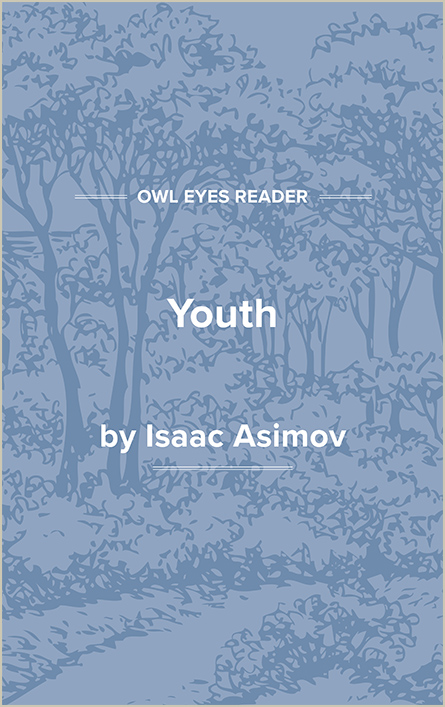Isaac Asimov Biography
Although often singled out for the great number and wide variety of his books, to the general reader Isaac Asimov (AZ-eh-mof) is best known and most likely to be remembered for his works in science fiction. He was born in Petrovichi, a shtetl (a small, culturally homogeneous Jewish community) about 250 miles southwest of Moscow. Throughout his life Isaac, the first son of Judah and Anna Rachel (Berman) Asimov, celebrated January 2, 1920, as his birthday, although as a result of lost records and faulty memories the actual date is uncertain. At the urging of relatives in the “golden land” of America, the Asimov family, which had recently added a daughter, left the Soviet Union in 1923 and traveled to the United States, settling in Brooklyn, where another son was born. Judah Asimov did odd jobs, accumulated some money, and in 1926 bought a small candy store, in which he and his wife labored for sixteen hours a day, seven days a week. Isaac, who learned from his father to respect hard work and careful study, helped his parents after school.
Asimov became an American citizen when he was eight years old. By that time, he was already recognized as an exceptionally bright student in the Brooklyn public school he attended. Even before he began school, he had become a voracious reader, a practice that led him in the summer of 1929 to experience his first science fiction in Amazing Stories. Because Judah Asimov believed that only bums read the pulps, he initially refused to allow his son to read these magazines in his store’s racks, but when Science Wonder Stories appeared, the word “science” convinced him of the new publication’s value. Soon Isaac was an avid fan. These magazines interested him not only in science and fiction but also in writing, and by the age of eleven he was composing stories of his own.
In 1935, when he was fifteen, Asimov graduated from high school and enrolled in Seth Low Junior College, then a part of Columbia University. Following his father’s recommendation, he started as a premedical student majoring in zoology, but he switched his major to chemistry in his sophomore year. While in college he continued to write stories, and his father bought him a typewriter to facilitate the process. In the summer of 1938, he completed a story called “Cosmic Corkscrew,” whose generating idea was helical time travel. Asimov knew that John W. Campbell edited Astounding Science Fiction in New York City, but he was surprised by his father’s suggestion that he take his story to Campbell in person. Campbell graciously talked with Asimov for more than an hour, and although he turned down the story, he encouraged the young writer to keep trying. Twelve rejections later, Asimov made his first sale, “Marooned off Vesta,” to Amazing Stories in October, 1938.
After receiving his B.S. degree in 1939, and after failing to get into medical school, Asimov continued at Columbia University in pursuit of a graduate degree in chemistry. Despite these moves toward a career in chemistry, he thought of himself more and more as a science-fiction writer, particularly after Campbell and other editors began regularly publishing his stories. He wrote his most famous story, “Nightfall,” in 1941 at the suggestion of Campbell, who, building on an idea of Ralph Waldo Emerson, wondered how human beings would react to the stars if they were visible only once every thousand years.
In the summer of 1941, after obtaining his master’s degree, Asimov married Gertrude Blugerman, a union that eventually produced two children, a boy and a girl. During World War II, he worked as a civilian chemist at the Naval Air Experimental Station in Philadelphia, and starting in 1945, he served in the U.S. Army and achieved the rank of corporal. In 1946, following his discharge, he returned to Columbia, where he studied the rates of biochemical reactions. Having received his Ph.D. in 1948, he began postdoctoral studies on nucleic acids at Columbia, before...
(The entire page is 1,731 words.)
Owl Eyes subscribers get unlimited access to our expert annotations, analyses, and study guides on your favorite texts. Master the classics for less than $5/month!

